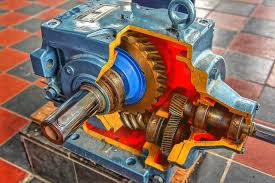Mobile:+86-311-808-126-83
Email:info@ydcastings.com
exhaust fan impeller
Understanding Exhaust Fan Impellers Essential Components for Efficient Airflow
Exhaust fans are crucial in various applications, from residential kitchens to industrial facilities, ensuring effective ventilation and the removal of stale air. One key component of an exhaust fan is the impeller, a device responsible for creating airflow. In this article, we will explore the function, types, and importance of exhaust fan impellers.
The Role of an Impeller
An impeller in an exhaust fan operates by converting mechanical energy into kinetic energy, which generates airflow. As the motor spins the impeller blades, they draw in air from the surrounding environment and push it out through the exhaust outlet. This process helps maintain effective air circulation, preventing the buildup of smoke, odors, and humidity. The efficiency of an exhaust fan largely depends on the design and performance of its impeller.
Types of Impellers
There are several types of impellers commonly used in exhaust fans, each suited for different applications
1. Centrifugal Impellers These impellers are designed with blades that curve backward. As air enters the impeller and follows the contours of the blades, it is accelerated outward due to centrifugal force. Centrifugal impellers are known for their high efficiency and are often used in applications requiring a significant airflow and pressure, such as industrial exhaust fans.
2. Axial Impellers Axial impellers consist of blades that move air parallel to the shaft. They are typically used in situations where high volumes of air need to be moved with low pressure. Common applications include smaller exhaust fans found in residential settings and ventilation systems.
exhaust fan impeller

3. Mixed-flow Impellers These impellers combine features from both centrifugal and axial designs. They provide a balance between high airflow and pressure generation. Mixed-flow impellers are often utilized in applications where space is limited but efficient air circulation is still required.
Importance of Design and Material
The design and material of an impeller greatly influence the performance of an exhaust fan. Factors such as blade shape, size, and angle can impact airflow rates and noise levels. Additionally, the choice of material—be it plastic, aluminum, or steel—affects the durability and efficiency of the fan. Impellers made from lightweight materials are generally easier to handle and install, but they should still maintain robustness to withstand operational stresses.
Maintenance and Longevity
Regular maintenance of exhaust fan impellers is essential to ensure optimal performance. Dust and grease can accumulate on the blades, reducing efficiency and potentially leading to motor burnout. Cleaning the impeller regularly can enhance airflow and prolong the lifespan of the fan. In some cases, worn-out impellers may need to be replaced to maintain effective ventilation.
Conclusion
In summary, exhaust fan impellers play a vital role in ensuring efficient airflow and ventilation in a variety of settings. Understanding the different types of impellers and their design considerations can help users select the right exhaust fan for their needs. Regular maintenance of these components is crucial for maximizing efficiency and prolonging the life of the fan. As ventilation standards continue to evolve, the importance of properly functioning exhaust fan impellers will remain significant for health, safety, and comfort in both residential and industrial environments.
-
Why Should You Invest in Superior Pump Castings for Your Equipment?NewsJun.09,2025
-
Unlock Performance Potential with Stainless Impellers and Aluminum End CapsNewsJun.09,2025
-
Revolutionize Your Machinery with Superior Cast Iron and Aluminum ComponentsNewsJun.09,2025
-
Revolutionize Fluid Dynamics with Premium Pump ComponentsNewsJun.09,2025
-
Optimizing Industrial Systems with Essential Valve ComponentsNewsJun.09,2025
-
Elevate Grid Efficiency with High-Precision Power CastingsNewsJun.09,2025











